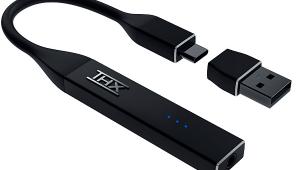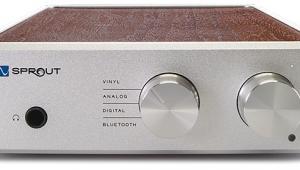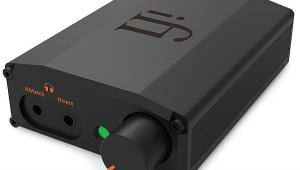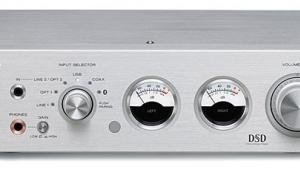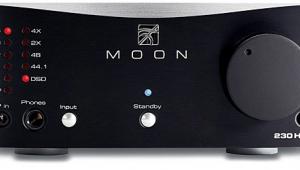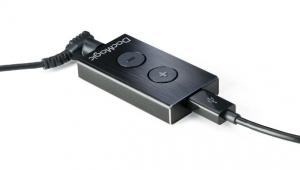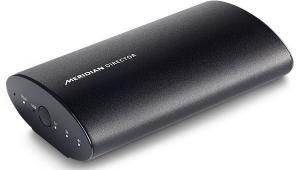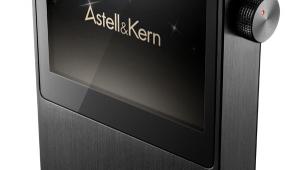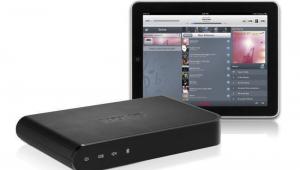Something in the Air: Wireless HDMI from Gefen, IOGear, and Vizio
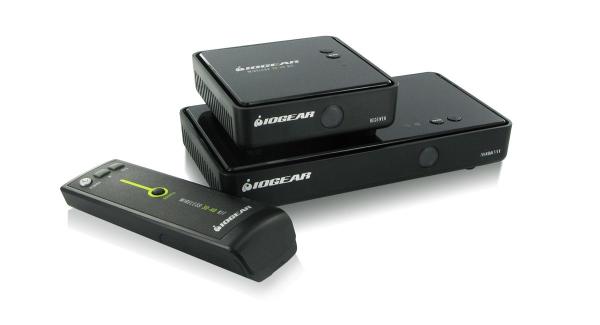
I have seen the future, and it is wireless. Wireless data, wireless music, wireless speakers, wireless keyboards, and now, wireless HDMI hi-def video. (Of course, all these things still need to be plugged into the wall, for AC power. Perhaps, somewhere on the Other Side, Nikola Tesla is still working on that.)
Wireless HDMI gets us that much closer to the Jetsonian ideal of the sheet-of-glass video screen floating unencumbered on a wall – without having to tear down that wall to run wires.
In more mundane terms it is a godsend for installers (and DIY-ers) confronted with long, challenging, or impossible wire runs, brick walls, rental contracts, irrational homeowners, and the myriad other challenges of the installer’s lot.
It’s a burgeoning field, wireless HD, with a couple of competing standards and fistfuls of vendors vying for pro and consumer buyers. Consequently, S+V has assembled three of the likeliest offerings from three brands that collectively know a thing or two about AV, accessories, and wireless. GefenTV is a long-time vendor of pro video gear and installer-friendly video and A/V solutions such as switchers, splitters, and format-converters. IOGear comes to us mostly from the Mac/PC accessories space, where they’ve supplied high-value gizmos such as keyboard/monitor switches for years. And Vizio is – well, you know who Vizio is.
Our three systems represent the two widespread wireless HDMI standards. GefenTV’s Wireless for HD 60 GHz and Vizio’s XWH200 Universal Wireless HD Video & Audio Kit (from here on simply “GefenTV” and “Vizio,” for obvious reasons) exploit the 60 GHz-band WiHD standard that numerous heavy hitters including Intel, Sony, and Toshiba among others are grooming as the future standard for local-wireless consumer electronics. This EHF (extremely high frequency) “millimeter” band is about as high as electromagnetic radiation goes before becoming almost-light, and so rather unsurprisingly is meant primarily for in-room, line-of-sight deployments. (While they don’t say so, one of WiHD’s key considerations, I suspect, is its non-propagating, and thus inherently content-protecting nature.) IOGear’s GW3DHDKIT Wireless 3D Digital Kit (“IOGear,” from here on – and couldn’t at least one these guys have named their gizmo “Model 1?”) is based on the confusingly similarly acronym’d WHDI standard, a 5 GHz-band protocol established by Samsung, LG, Sharp, Sony (again), and others for HD wireless from home and mobile devices. WHDI is potentially longer-range and, as we shall see, more penetrating.
The three systems are more similar than otherwise. Each includes a duo of small components, a transmitter (“sender”), and a receiver, each requiring power from a wall-wart power adapter. Each connects to its sources (sender) or display (receiver) via conventional HDMI cables, and each provides some basic command via a supplied card-style remote controller. Each system can link one or more HDMI source(s) such as a high-def cable box or Blu-ray player to a single HDTV. Or each could conceivably be inserted between an AV receiver/processor and screen, leaving the AVR to perform source selection. (The IOGear and Vizio designs both include multiple HDMI inputs, and can source-select themselves.)
All three systems pass up to 8 channels of uncompressed (LPCM) audio – typically, 48 kHz FS from multichannel soundtracks, but as best I could determine, none would deliver a BRD’s hi-rez audio streams to an external decoder such as an AV receiver. In a hook-up that separates audio and video (as in the loop of an AV receiver or processor), any latency in the wireless link may de-synchronize audio a bit, so in some cases it might be necessary to apply the lip-sync-delay included in most mid- and high-end AVRs. That said, I did not witness discernible latency in these systems.
One divergence: Both the Vizio and IOGear systems claim 3D compatibility; GefenTV’s makes no mention of 3D, but specifies HDMI 1.3 (no-“a” compatibility), suggesting not. Since I’m not a 3D shop, I can’t confirm or dispute.
I evaluated each system in turn by employing it to link my 52-inch Samsung LCD set and a Blu-ray deck, stacked, along with the respective senders (connected one at a time, of course), on a wheeled cart, which I could move around the room and then withdraw through the door of my studio and down a hall up to about 40 feet distant while still maintaining nominally “line-of-sight” alignment, albeit narrowly, through the door. This was, of course, far from scientific rigor, so I’ll make the usual disclaimers: As with anything radio, environment is everything. A different room, locale, construction, furnishings, and possibly even paint or carpeting would almost certainly influence the results: maybe a little, maybe a lot — I have no way of knowing.
